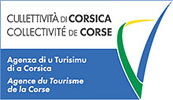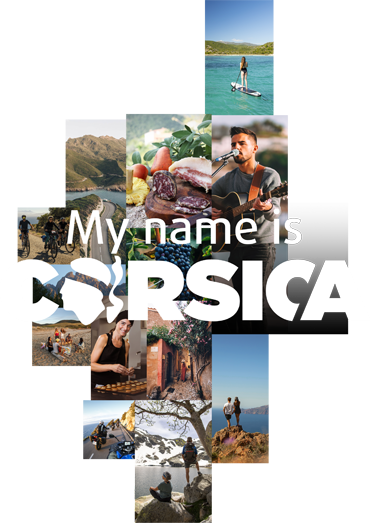Rechercher...
Explore Corsica
Clos Culombu
A Family committed to the service of the land
 ©corsematin
©corsematin
THE BIRTH OF THE PROPERTY
"The history of the estate began in 1972 when my uncle, Paul Suzzoni, supported by his father Antoine, decided to plant vines," says Paul-Antoine Suzzoni. "Even then, my grandfather believed that the focus on commercial and material things was not the most important things. For him, what was the most important thing was The Earth! He saw the proper cultivation of the vine as a solitary, noble and viable heritage, the only way to true wealth," explains Paul-Antoine. Paul Suzzoni therefore looked for areas that would be valid for his methods of harvesting and ended up buying about twenty hectares of land. In 1973, he created three planting areas on a vineyard of 25 hectares. In 1976, the first harvest, from the first 14 hectares of Niellucciu, produced rosé and red wines. "At the time, wine was sold in bottles or in bulk. My uncle and grandfather went to the villages with barrels and sold the wine in cans. Bottles were rare and to get them, you had to go and collect them from the port of Calvi, unload them from palettes and then load them into the van. It took a lot of conviction to make wine here! My family took on a lot of work to make a product that it was frankly a struggle to sell at the time. My grandfather and uncle used to say that it takes three litres of wine to pay for one litre of milk. Corsican wines did not have a great reputation with local consumers and did not interest the continental and foreign market. Going to sell wines in Paris was utopian!” Paul-Antoine says proudly.
 ©CORSE MATIN
©CORSE MATIN
PAUL-ANTOINE SUZZONI
After he gained a BTS viticulture-oenology diploma in 2012, a degree in Biochemistry for a DNO (National Diploma of Oenology) in 2013 and a Viti-Œno Engineering Diploma in 2016 in Changins (High School of Viticulture and Oenology in Switzerland), Paul-Antoine Suzzoni returned to the family estate in July 2016, with the intention of learning about the wine making before leaving to travel abroad with Lola, his girlfriend. But he fell under the spell of the vines, and the desire to participate in the project to extend a new cellar, and to complete the plans for the property, convinced him to stay. The projects were completed before the 2020 health crisis.
RESTRUCTURING WORK
"In 1986, my father Etienne, who was studying veterinary medicine, decided to become a winemaker. He took over the farm two years later, restructured it and expanded it." says Paul-Antoine. Adopting the wisdom of his father, Etienne aimed to work with the land "the treasure is the land, it is necessary to invest in the land". When Etienne took over the farm, there were about thirty hectares. Today, that area has multiplied tenfold, "we now own 320 hectares of land spread over 64 hectares of planted vines, eight hectares of olive trees and a hundred hectares dedicated to breeding, mainly suckler cows and some oxen for the traditional process of wheat threshing, La Tribbiera," says Paul-Antoine. The two brothers, Paul and Etienne, want to plough using oxen, a tradition used in Balagne and Patrimonio in the past. Breeders of mules and horses are quite rare. "My father was passionate about oxen for that reason!" Today, it is Christine, Etienne's wife, trained in animal husbandry by Jean-Claude Lorenzoni, who manages the plots. She has two mules and works about ten hectares. Ploughing, ridging, starting, stripping... She drives and steers her team with a masterful hand.
ETIENNE'S COMMITMENT
When Etienne took over the estate, he was part of a new wave of winegrowers, a new generation who wanted to give Corsican viticulture the reputation it deserves. He joins winegrowers such as Yves Leccia, Yves Canarelli, Jean-Charles Abbatucci, all young winegrowers in search of recognition for the winemaking process, the unique identity and quality benchmarks of Corsican vineyards. "My father and uncle went to Paris, followed and supported the ideas of wine proponents here and then became a driving force for the wines," says Paul-Antoine. Etienne credits the philosophy of Antoine Arena, the expertise of Christian Imbert and the determination of Dominique Gentile with the progress of Corsican wines. Confident and committed to the cause, out of love for his land and his island, he was involved in agricultural policy and served as President of the Union, President of the GIAC (Inter-Union Group of AOC) and President of the Chamber of Agriculture of Haute-Corse. He worked for the collective, planning and supporting those in the wine profession and committed to the development of Corsican vineyards. "It's not just because he's my father, but he's someone who had noble beliefs, and a healthy partnership with other winegrowers," states the young winemaker.
THE CELLAR AND PRODUCTION
The initial cellar, which was dilapidated and unsuitable, was restructured in 2010. A modern cellar was built that is easy to work with - stainless steel tanks, ageing areas, a reception area and clear premises. But, at the galloping pace of the volumes of wine produced from the 55 hectares of the property and the 40 hectares of the trade, the cellar was soon too small. In 2018, a superb extension was built, equipped with ten 72 hl raw concrete tanks filled, a fantastic vertical hydraulic press, barrels, three bronze-coloured concrete egg-shaped tanks.
 ©CORSE MATIN
©CORSE MATIN
A VIRTUOUS APPROACH
The green and vigorous vineyard has been certified Bio organic since 2013 and Demeter organic since 2018. It has beautiful grassy rows of radish, oats, lupine, grasses and root vegetables which helps to structure and aerate the soil. "We try to make mulch that is thick with fibre to provide sufficient nitrogen and organic matter. We make our Preparation 500 with the dung from our cows and horns partly provided by our herd. Silica structures the plant and can be used before harvest to stimulate the synthesis of polyphenols and anthocyanins, extract colour, homogenise the maturity of the grapes and the plant., I noticed that the horn silica also affected the olive trees, the olives turned green and ripened quickly. I also noted, during silica spraying tests carried out on a plot of Sciaccarellu three days before harvest, that the concentration of colour was higher and the aromatics more expressive than the control zone. Perhaps there is no causal link?" wonders Paul-Antoine before concluding "the winegrower does better when he makes his farm more resilient and regenerates his soils by making them more alive. I like the term regenerative agriculture. Isn't the objective of biodynamics to transmit soils that are more fertile and more resilient than those we have inherited?”
THE ESTATE PLAYS ITS SCALES!
The range of Tribbiera IPG (quality sign) trading comes from the eastern plain, Tallone and Urbinu and Calvi. "This part of the trade is interesting because it provides for entry-level volumes for IGPs in rosé, white and red. There is potential to improve the quality, and this makes us a premier cuvée at a very attractive price," explains our contact. When we taste wines made at the heart of the Clos Culombu ran, in all three colours, we perceive the taste of the estate on the fruit, the freshness, the balance, the frankness. The wines reveal the varied diversity on the granite arenas of Calvi. "This is the soul that my father wanted to give to his wines," proudly announces the winemaker. The umbrella range of Storia Di is evolving according to the vintages, it reveals a tale of experience, micro-vintages, experiments. "It's our learning of terroirs, which we don't yet know completely, it's an internal work of research, vinification and native grape varieties," reveals Paul-Antoine. These are plots planted in good proportion with a variety of grape varieties collected at the same time, then vinified and aged as at the time, in specific and unusual containers. "A large part of the Storia Di harvest goes into barrels. Our conviction revolves around the complexity of the containers and that of the grape varieties that offer a superb product complexity. We are working on balance," reveals Paul-Antoine Suzzoni. Of the Ribbe Rosse parcel he says, "it is an island, with a particular soil of clay alluvium". This beautiful terroir, splashed by the setting sun and the marine atmosphere, brings out the best in red, white and rosé, concentration of the fruit, roundness, complexity, minerality, matter and balance. Extracting the best from the earth, respecting the living, regenerating life, observing, restructuring, reflecting, producing diversity and tasting its authenticity, these are the honest, dynamic and laborious commitments of the fathers and sons of the family, since the creation of the estate.
 ©CORSE MATIN
©CORSE MATIN
OTHER ACTIVITIES OF CLOS CULOMBU
On July 22, Clos Culombu invites you to attend " La Tribbiera", the traditional wheat threshing on the farm. Open to all, this event is also an opportunity to enjoy a food-truck/wine bar at noon. "Our goal is to present an almost complete agricultural organism in complex and coherent conditions of biodiversity and cultural diversity towards the balance between man and nature". Every year, in the tasting cellar, Le Clos organizes an exhibition of local artists. All year round, you can also enjoy mountain biking through the marked vineyards and a donkey ride in the vineyard.
 ©closculombu
©closculombu
Clos Culombu
Chemin San Petru, 20260 Lumio
Tel. : 04 95 60 70 68
Locate


powered by cd-media.fr



